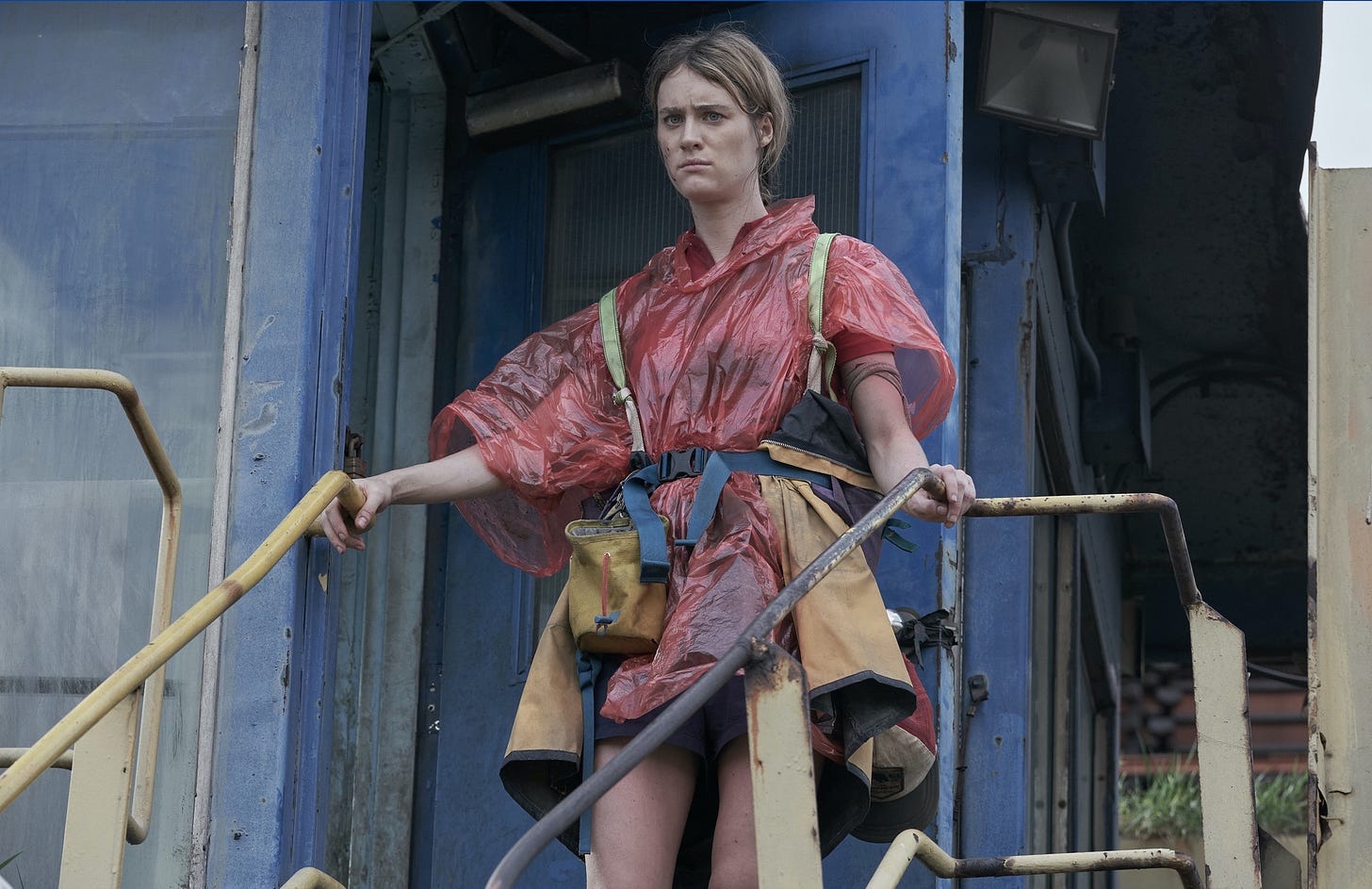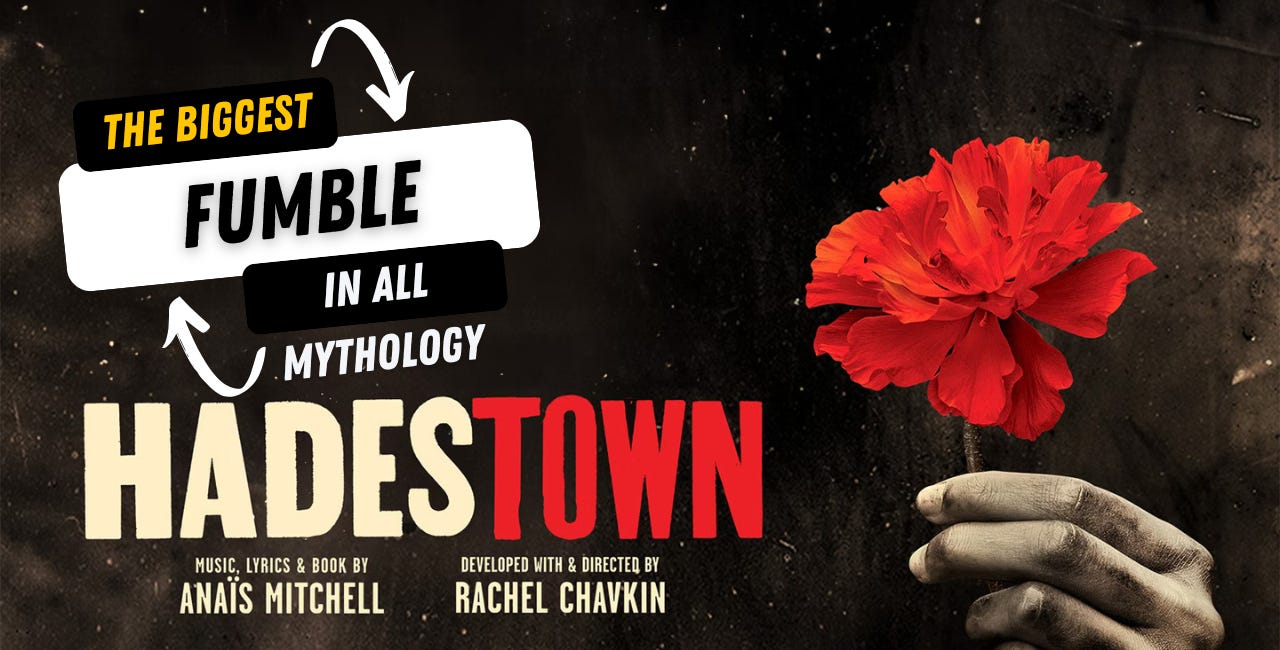Make Your Readers Feel
The one where we talk about non-linear storytelling and character depth in "Station Eleven," then tragic endings and the purpose of art in "Hadestown"
It’s Monday, friends!
We made it to the month of March. Thinking about how sometimes we can only understand the purpose of pain in our own life narratives when looking back makes me interested to talk about this week’s topic: non-linear storytelling. This technique can make your story land very powerfully when done right (I think of how much I loved the book All the Light We Cannot See when I read it last year). Today, is teaching you how to use this technique effectively to make your story feel as impactful as possible by talking about the show Station Eleven.
(OBA Media Newsletter Editor-in-Chief)
P.S. Scroll all the way down for your early release of our next podcast episode, where we talk about character depth, the power of creativity and love to change our world, and the impact of tragic endings in the musical Hadestown!
This Show Made Me Rethink Everything About Storytelling—And It Can Help You, Too
Have you ever seen, watched, read, or listened to something that fundamentally changed the way you saw storytelling? It stuck with you for days, weeks, months, or even years? That’s how I felt about the television series, Station Eleven. While the show specifically taught me many lessons about storytelling, two stood out:
Creating emotional resonance, and
The power of non-linear storytelling—something I’ve grappled with for quite some time.
Station Eleven is one of those stories that sticks with you because it’s not just about surviving the end of the world—it’s about what makes survival worth it. The show bounces between timelines, showing life before the apocalypse—full of ambition and complicated relationships—and life after, where a Traveling Symphony performs Shakespeare in the ruins.
At its heart are characters like Arthur Leander, a flawed actor whose death ties everyone together, and Kirsten Raymonde, who carries fragments of the past, like a comic book that becomes a symbol of hope. The story is truly about how the connections between people and art make life meaningful.
Some of you may already be familiar with non-linear storytelling and the power the style can give your narrative. Well, good on you, because I sure wasn’t. Watching this show, I learned that sometimes the most profound realities emerge when we weave the past, present, and future together. Fragmented timelines can strengthen narratives both thematically and emotionally. For those of us who weren’t as cool as you know-it-alls in the non-linear storytelling club, I’m breaking down the walls to share lessons Station Eleven taught me about utilizing the technique to build emotional resonance. Let’s jump in.
Contrast Creates Emotional Resonance
One of Station Eleven’s great strengths lies in how well the series contrasts moments of normalcy with scenes of survival. This structure is deliberate, and the result is heightened emotional moments that just stay with you. Take, for instance, some of the characters (SPOILER ALERTS):
Arthur Leander: His life as a famous but flawed actor contrasts with the chaotic aftermath of his death. His legacy ripples across our protagonist’s and many of the other characters’ lives.
Kirsten Raymonde: Her memories of Arthur performing Shakespeare are intercut with her current life in the Traveling Symphony, performing the same plays in a devastated world.
Each character, no matter the timeline, plays a role in the others’ stories. The threads are woven across the entire season, and moments you think have nothing to do with the main plot become jaw-dropping, tear-jerking, rewarding payoffs later. The most striking thing is that the characters come from all different backgrounds, yet their differences paint a cohesive picture of the world they live in.
These contrasts made me acutely aware of everything that was lost and everything that remained. By shifting through timelines, the show punches up the fragility and resilience of its humans.
In short: Non-linear storytelling can boost emotional resonance by contrasting past joy with present struggles, forcing your audience to reflect on these differences and invest emotionally in your characters’ growth and journey.
Layered Character Development
I am a character connoisseur (if you’ll allow me to be fancy for a moment). I love characters. They are the first and foremost thing I focus on when reviewing, creating, or talking about stories. Station Eleven has amazing characters. But characters mean nothing if they don’t grow and if we don’t grow with them. It’s like going on a bunch of first dates and never progressing into a relationship. Great character growth is like going on a series of great dates with someone—each time, we learn something new and interesting about them. Sometimes we won’t like what we see. Sometimes we’ll fall in love with them instantly. This experience is called character development.
Station Eleven uses its fragmented structure to explore characters across timelines, revealing their complexities and growth. Let me pitch you a scenario: imagine you’re on a date with someone. But instead of meeting them only in the present, you’re traveling back and forth in time, seeing them at different points in their life. You see how they change from when you first meet, to the middle of the relationship, or even the end. Sometimes you wonder why you got with this person in the first place. Other times, you’re swept off your feet.
That journey is Station Eleven in a nutshell. It forces us to see characters at different parts of their lives, back and forth, discovering new versions of them each time.
Arthur Leander: Through flashbacks, we see him as a driven actor, a flawed husband, and a man grappling with regret. By the time of his death, he’s no longer just a celebrity—he’s a deeply human figure.
Miranda Carroll: Her journey from a toxic marriage to artistic fulfillment in creating the Station Eleven comic reveals her resilience. The comic becomes the throughline that connects characters like Kirsten and Tyler long after Miranda’s death.
By layering timelines like this, the show avoids presenting characters as static, paper-cutout figures. Instead, their choices are shown to ripple through time, shaping themselves and others. For example, Arthur’s relationships with Miranda and Kirsten influence the world even after he’s gone.
If you want to create multidimensional characters, non-linear storytelling is a great tool to show their growth, contradictions, and the lasting impact of their actions across the entire story world.
Themes Unfold Through Time
Theme. That pesky word no one seems to explain in a satisfying way. While I won’t claim to solve that definition here, I can say that Station Eleven makes its themes clear: memory, legacy, and humanity’s resilience. The series is both an encouraging and heartbreaking story. The non-linear structure mirrors those themes, reflecting the fractured nature of memory and legacy while showing how people endure.
Some examples of how these themes are developed include:
The Station Eleven Comic: Created by Miranda, the comic becomes a symbol of hope and connection across timelines. It ties characters together in amazing ways and represents creativity and endurance in a fractured world.
The Traveling Symphony’s Mantra: “Survival is insufficient.” This phrase resonates throughout the series, capturing the survivors’ resilience and their reliance on art to maintain humanity in the post-apocalypse.
When these timelines are spun together, the show lets its themes emerge naturally rather than through heavy-handed exposition. For instance, the parallels between Arthur’s struggles and Kirsten’s survival highlight how human connections transcend time. This thematic connection offers us a profound dive into the emotional and intellectual depth of the story.
TL;DR: Your Mission (Should You Choose to Accept)
Station Eleven touched my soul, and I aspire to create something as beautiful someday. I’ve always shied away from writing non-linear stories, but Station Eleven inspired me to embrace them. I hope it inspires you to do the same—or at least take a stab at the technique.
The show proves that stories don’t need a straight path to be great. Weaving timelines together can reveal deep connections between moments, characters, and themes. As writers, we’re always looking for new ways to tell our stories. Jumping through timelines is a fantastic way to do that. Time isn’t just a tool—it can become a character itself, shaping your narrative’s emotional core.
So start at the end, or the middle. Bounce around. Show us contrast throughout time periods, use multidimensional characters and make their choices have rippling consequences, and string the threads of theme throughout the entire timeline. Make us fall in love with your time-traveling storytelling.
Not sure how to create a compelling non-linear storyline for your project? We’re here to help you! Get your FREE Consultation with an OBA pro writer/editor—because your story deserves to be told in the best way possible so it can positively impact the world. You bring the vision, we’ll help you land the punch.
Wondering If It’s Worth Pursuing Your Creative Passions Even In the Face of Inevitable Tragedy?
This episode is for you. As a subscriber to OBA’s newsletter you get early access to our podcast episodes. Today, the team is talking about the Broadway musical Hadestown and how this adaption of the Greek myth demonstrates the power of story to transcend time and culture.
Let's Talk "Hadestown": How It Masterfully Weaves Theme, Character, and Conflict (And How You Can, Too)
In this episode, we’re discussing the Broadway musical Hadestown, exploring the role of tragedy, the complexities of love and ambition, and the significance of art and creativity in our world. Join us as we dissect the story of Orpheus and Eurydice, examining how the narrative reflects modern societal issues and the human experience.
Catch up with our previous episodes here:
To submit a story question for
to answer in the next “Director’s Cut” episode, feel free to reply to this email or drop a comment!CAPTAIN’S LOG
3/2/2025
After putting in endless hours of work, tears, and excited squeals, “My Sister’s Keeper” is sent off to beta readers! That means that for the next month, I will be focusing on gaining traction toward growth for OBA Media through collaborations and the creation of educational courses based off of our branded outline method. We are also going to be doing weekly live videos chatting about how good stories are made on Substack, YouTube, and Instagram. If these conversations sound interesting to you, feel free to drop by on Mondays and Fridays! We always learn the most from each other when we combine all of our perspectives and experiences, so please send us a message if you would like to join in the conversation and we would love to have you as a guest.





Aahhh now I’m going to have to watch Station Eleven! Sounds right up my alley.❤️